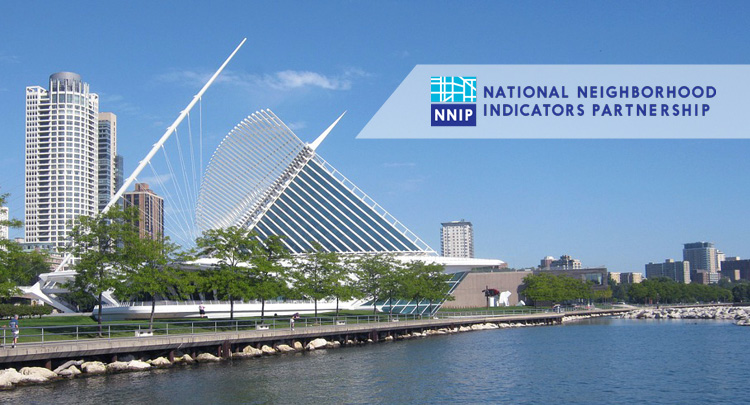We’re Better Together: A Reflection on the National Neighborhood Indicators Partnership Convening


Be better. Be more profitable. Be smarter. Write a better grant. Have a better program. The competitive nature of the business world seeps into the world of philanthropy. We are encouraged to compete, and we do. But there is space for all of us, and no one of us is as strong alone as we are together.
While the partner organizations could choose to view one another as competitors, we choose instead to view one another as partners. We collaborate with one another on projects, and we all come together annually for a meeting to connect and to learn from and with one another. We share our successes and our struggles. We are honest and transparent, and we all come out of it with the benefit of learning from others’ successes and mistakes. For me, this year’s NNIP meeting was first and foremost an opportunity to learn from my colleagues.
Partners from Baltimore, Minneapolis, and Durham, NC discussed (panel-style) their work with advocacy organizations. Because of our role in the communities we serve — as intermediaries whose purpose is to convey data — sometimes we feel as if we cannot advocate because it would take away from our credibility and neutrality. The surprisingly widespread misconception that advocacy somehow undermines the quality or objectivity of data holds us back. The panel was a good reminder that we can, and often should, advocate without compromising our neutrality. Being transparent and backing up our findings and arguments with data can help us remain trustworthy while using the data to fight alongside advocacy organizations and have an impact on the community.
This is not to say our advocacy at the Johnson Center, as an academic center of Grand Valley State University, does not look a bit different. For us, advocacy is often less about policy and more about raising awareness about the real disparities that exist within the communities we work with. We are intentional about incorporating an equity lens when we design our research, evaluation, and consulting projects, and we contribute to helping others raise their capacity as well.
The Johnson Center’s research team serves as a key hub for this work as we gather and analyze data from specific communities. When the data show evidence of inequity, it is important that we elevate the voice of the data, ensuring that community partners have the information they need to influence policy change. When the data calls for change, we are doing our communities and ourselves a disservice by not advocating for that change. Advocacy organizations are better with us, and we are better with them.
 Scott Whitehair, an independent instructor, came to work with us on storytelling. We worked on refining stories, learning from past telling of stories, and changing your story based on the non-verbal feedback of the listener. Whitehair specifically walked us through the three relationships that accompany any story: the relationship between the teller and the story, the teller and the listener, and the listener and the story.
Scott Whitehair, an independent instructor, came to work with us on storytelling. We worked on refining stories, learning from past telling of stories, and changing your story based on the non-verbal feedback of the listener. Whitehair specifically walked us through the three relationships that accompany any story: the relationship between the teller and the story, the teller and the listener, and the listener and the story.
We must do our best with the relationships between ourselves and the listener and ourselves and the story. We hope for the best for the relationship between the story and the listener. Depending on the listener, and the story, that can mean lengthening or shortening, sticking to the objective facts, or dabbling in emotion. It was a great reminder that stories evolve over time; our stories grow and change based on new information and listener feedback. Even telling stories is a collaborative effort.
The fear of “Census 2020: The Citizenship Question” runs deep, as does the desire to thwart its potential effects. Although the Supreme Court recently struck down the question’s inclusion in next year’s decennial survey, there are few who believe this issue is totally settled. At the time of our conversation at the NNIP convening, the Supreme Court had not yet made this ruling.
With the threat of lost governmental funding, there are efforts throughout the nation to get residents to fill out the census. But another theme ran through the conversation: Is filling out the census risk-free for non-citizens? More importantly, can we feel comfortable asking folks to fill out the census if their personal safety is at risk? In short, that is an answer for which we still search, and an answer we may never find. Even without a proper answer, it was important to grapple with this together.
Spending a few days working through these conversations and sharing in this learning process brought us closer together as partners. Not only did it help us learn, connect, and grow, but it helped us remember: we’re better together.
It’s not us against each other; it’s all of us against the problems we’re trying to solve. Be smarter together. Write a better grant together. Have a better program together. Be better together.
